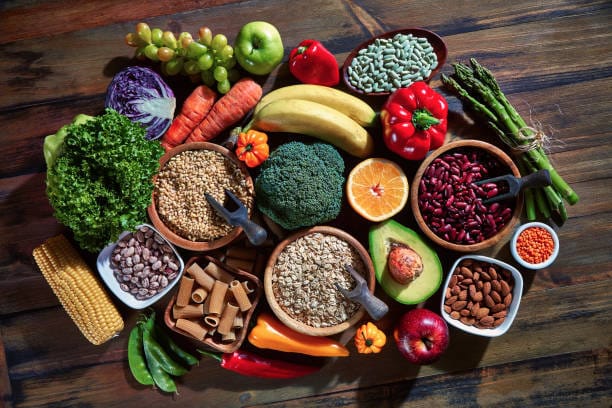- L-Plate Retiree
- Posts
- Fibremaxxing: The TikTok Health Trend That Could Transform Your Gut (Or Wreck It)
Fibremaxxing: The TikTok Health Trend That Could Transform Your Gut (Or Wreck It)
Why Nutrition Experts Are Both Excited and Terrified by This Viral Wellness Craze

because retirement doesn’t come with a manual
Your trusty L-Plater is back, navigating the twists and turns of retirement (and pre-retirement!) so you don't have to go it alone. Fasten your seatbelts, it's time for another dose of wisdom, wit, and ways to make this chapter your best one yet!

The quick scan: Tuesday delivered another dose of tariff-induced anxiety that had investors feeling like they were watching a slow-motion tennis match between economic policy and market sentiment. Markets ended mixed as President Trump announced new copper tariffs while maintaining his August 1st deadline for broader trade measures, proving that uncertainty remains the market's least favorite flavor.
• S&P 500: Slipped 0.8% to close at 6,229.98, pulling back from recent highs like someone testing the water temperature before diving in
• Dow Jones: Dropped 165 points (0.4%) to 44,240.76, blue chips showing their usual cautious personality when trade tensions bubble up
• NASDAQ: Fell 0.9% to 20,412.52, tech stocks apparently deciding that Tuesday was a good day to practice patience rather than optimism
What's driving it: Continued uncertainty over Trump's tariff policies, including new 50% levies on copper imports, kept investors in a wait-and-see mode. Sometimes the market needs to digest policy announcements like a heavy meal—slowly and with occasional discomfort.
Bottom line: Tuesday's modest pullback suggests markets are still trying to figure out the long-term implications of evolving trade policies. When uncertainty is the main course, even the hungriest investors tend to eat with smaller bites.

Fibermaxxing: The TikTok Trend That's Either Genius or a Recipe for Digestive Disaster

any non-meat-atarian here?
The scoop: Move over protein obsession—there's a new wellness trend taking over TikTok that has nutrition experts both excited and slightly terrified. Fibermaxxing is exactly what it sounds like: loading up every meal and snack with fibre-rich foods (and sometimes supplements) to maximize your daily intake. It's like the CrossFit of digestive health—intense, potentially beneficial, but definitely not something you want to jump into without proper preparation.
The trend reflects a growing shift away from protein-obsessed diets toward a stronger focus on digestive and colon health. Fibre supports healthy digestion, helps regulate blood sugar and cholesterol levels, promotes satiety for weight management, and is linked to lower risks of heart disease, type 2 diabetes, and certain cancers. It's basically the Swiss Army knife of nutrients—useful for almost everything.
But here's where it gets interesting (and potentially uncomfortable): most Americans only get about half the recommended daily fibre intake. Women ages 18-50 need 25 grams daily, women over 51 need 21 grams, and men need 30 grams. So fibremaxxing could theoretically help bridge that gap—if you don't accidentally turn your digestive system into a gas-producing factory in the process.
The potential benefits and risks:
• The good news: Fibre supports gut health, blood sugar stability, cholesterol management, and cancer prevention. Low-fibre diets are linked to microbiome imbalances and increased risk of inflammatory diseases—basically, your gut bacteria throw a tantrum when they don't get enough fibre to munch on.
• The not-so-good news: Increasing fibre too quickly can cause gas, bloating, cramping, constipation, and diarrhoea. Your gut bacteria essentially go into overdrive trying to process the sudden influx, producing excess gas as a by-product. In rare cases, dramatic increases without proper hydration can even lead to intestinal blockages requiring medical attention.
• Special considerations: If you have IBS, Crohn's disease, ulcerative colitis, or chronic constipation, a high-fibre diet might not be ideal and could temporarily make symptoms worse. It's like trying to fix a clogged drain by pouring more water down it—sometimes you need a different approach.
• Hydration is crucial: Fibre needs water to do its job effectively. Soluble fibre requires water to form the gel that regulates blood sugar and cholesterol, while insoluble fibre needs water to add bulk and move things along efficiently. Experts recommend 8-10 cups of water daily when boosting fibre intake.
Actionable takeaways:
• Start slow and steady: Instead of jumping from 10 grams to 30 overnight, add just 3-5 grams per week to give your digestive system time to adjust. Think of it as training for a marathon, not sprinting to the finish line.
• Spread it throughout the day: Enjoy oatmeal with berries for breakfast, vegetables or legumes at lunch and dinner, and snacks like fruit with nuts or popcorn in between. Consistency makes it easier for your body to adapt and creates sustainable habits.
• Prioritize whole foods over supplements: Whole foods naturally contain a mix of soluble and insoluble fibre, plus vitamins, minerals, and phytonutrients that supplements don't offer. Supplements can be helpful for those who struggle to meet fibre needs through diet alone, but they should be an addition, not a replacement.
• Pair every fibre-rich meal with water: Make it a habit to drink a full glass of water with every high-fibre meal or snack to support proper digestion and prevent uncomfortable side effects.
• Listen to your body: If you experience persistent bloating, cramping, or other digestive issues, slow down the process or consult a healthcare provider. Your gut will tell you if you're moving too fast—pay attention to the signals.
Your Turn: Are you already a secret fibermaxxer, or does the thought of deliberately eating more beans and Brussels sprouts make you want to hide under a blanket? Have you ever tried to dramatically increase your fiber intake only to discover why they call it "roughage"? Drop a comment below and share your fiber adventures (or misadventures)—I'm curious whether this TikTok trend will actually stick or if it'll go the way of most viral health fads!
Ready to take control of your retirement planning? Join our community of L-Plate Retirees who are learning to navigate their financial future with confidence and a sense of humour.
Subscribe now and get practical tips delivered to your inbox every weekday
Because retirement doesn't come with a manual... but now it does come with this newsletter.
The L-Plate Retiree Team
(Disclaimer: While we love a good laugh, the information in this newsletter is for general informational and entertainment purposes only, and does not constitute financial, health, or any other professional advice. Always consult with a qualified professional before making any decisions about your retirement, finances, or health.)
Reply